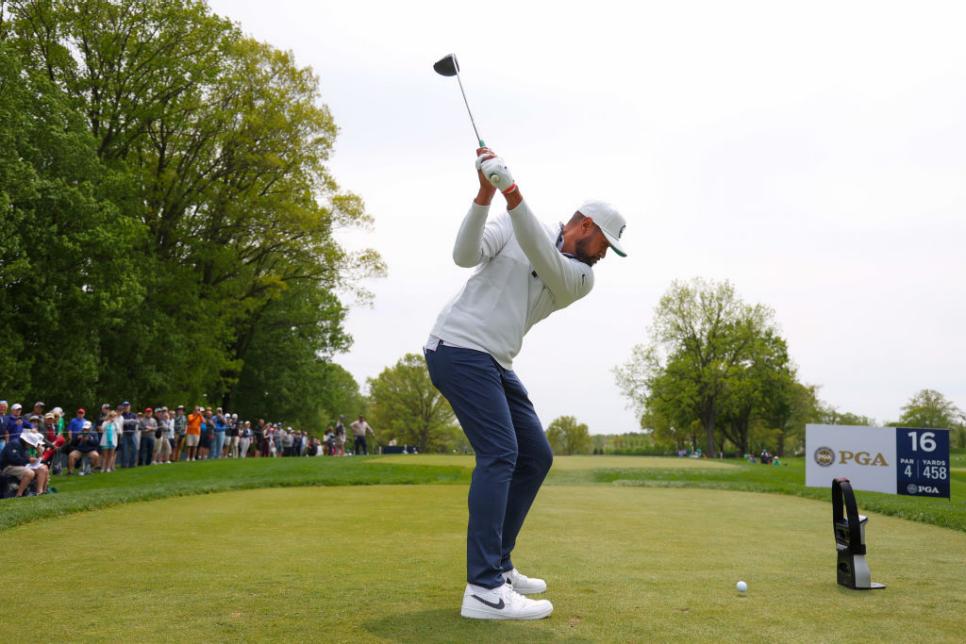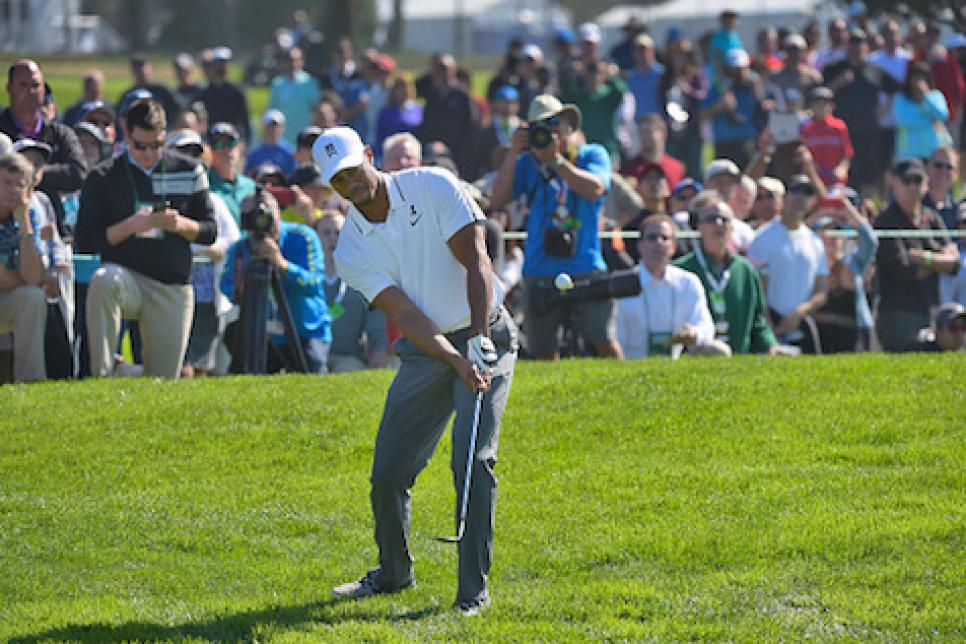Golf Nerd
PGA Championship 2023: 5 insights from tour pros that golf nerds will love

Maddie Meyer/PGA of America
As Golf Digest’s resident golf nerd, I always find pre-major championship coverage funny. Professional golfers are, for the most part, one-dimensionally focused on their own games. They go to the range; they practice their short game; they go to the gym; they eat (Chipotle, often); they sleep; they play lots of golf; they do it again the next day.
And then major championships roll around, the wider media ecosystem parachutes in and take the opportunity to ask all sorts of big picture questions. Not about their games, but rather, the macro stuff.
Like whether they care to speculate on what the golf landscape will look like in three years.
“No, I don’t have a crystal ball,” Rory McIlroy said.
Or what they think of the LIV Tour currently.
“I don't spend a lot of time thinking about too much of that stuff,” Scottie Scheffler said.
Or what explains their up-and-down in form.
“Nothing special really,” Jon Rahm said.
The short answers get especially short around major championships, when the pressure peaks and players tense up. But they’ll often dive a little deeper on the details. That’s what they obsess over, after all. The tiny little things that give them a tiny little edge.
Ahead of the 2023 PGA Championship, they offered some insights that the rest of us can use, too.
1. Rory chasing milliseconds
Perhaps the most interesting exchange came when Rory McIlroy talked about his golf swing, which I unpack in a little more detail right here.
Long story short, McIlroy said when things go wrong in his golf swing, it’s when the club gets too open and inside on the downswing. It’s an issue that starts on the downswing, he says. He rolls the clubface open on the takeaway, which gets the club “out of position” at the top of the swing and causes a chain reaction.
“I was really struggling to square it on the way down, throwing my hands on it,” he says. “With the face coming down so open on the way down and having to try to close it so quickly to get it squared up, you're talking timing and fractions of seconds between the ball going 20 yards right or it going 20 yards left."
2. Lots of ways to make a 5
Golf is hard enough as it is without self-sabotaging with unforced errors. It’s why discipline might be the most important mental quality in golf—and especially for players at majors. Players will hit shots into trouble.
The winner this week will be the one who takes the opportunities not to hit the hero shot, but to get back into position. Maybe give yourself a chance for a par save. Bogeys won’t kill you; doubles will.
“There's many ways to make a 4 or 3 or 5,” Rahm says. “You don't always have to go at it all the time. I think there's always a lesson to learn for everyone.”
3. Finau's favorite rough tip
Speaking of lessons everyone can learn from, Tony Finau had a great one about what to do when your ball is in heavy rough: Open the clubface so you expose the bounce of the club, and swing more down into the dirt.
“One of my favorite pieces of advice I have for amateurs is that you've got to chip with a little bit more bounce [on the club], a little bit more of an open face, and then just get a little steeper so you can hit closer to the back of the ball,” he says. “If you catch too much grass before the ball you're going to shut the club face and you're got to hit everything hot and left.”
4. Learning what you can—and can't—do
PGA Professional Braden Shattuck’s life completely changed in 2019. In his car on his way to a mini tour event, he was involved in a terrifying car crash, which left him with multiple leg and back injuries. It forced him to completely re-work his swing. It was difficult, but it was a process that he learned to love.
“It was almost like I was building somebody else's swing. It was a neat little experiment to be honest with you,” he said.
The solution he landed on, he said, was to weaken his grip so the club rested more in his palm. Then he trained himself to swing his arms more upright back-and-through. It helped him hit a cut, and made his golf swing more reliant on his arms, and less on his body.
He learned what he physically could do — and didn’t try to do something he couldn’t.
“I knew what hurt in my golf swing, so I figured if I could do something with my setup and my golf swing to take some pressure off of those areas, that even if I didn't fully heal that maybe I could still swing a golf club with minimal pain.”
5. Tiger's body awareness

Stan Badz
Following up on some interesting comments last week, Day talked about the time Golf Digest Top 50 Teacher Chris Como enlisted him to help Tiger Woods overcome the chipping yips. Como was coaching Tiger at the time and currently works with Day.
You can read more about it here, but an interesting new throwaway line within this anecdote was Day talking about the level of awareness Tiger has about his own body.
“I actually probably learned more coming out of that little meeting with Tiger than he learned from me because back then I didn't really understand how he could feel every joint, every piece of his body move the way that he wanted it to,” he said. “Like, he could literally feel everything turning and moving and bending. I'm like, man, I just have straight arms, and I just rock it through.”
It’s the kind of intense level of genius that makes Tiger, well, Tiger.